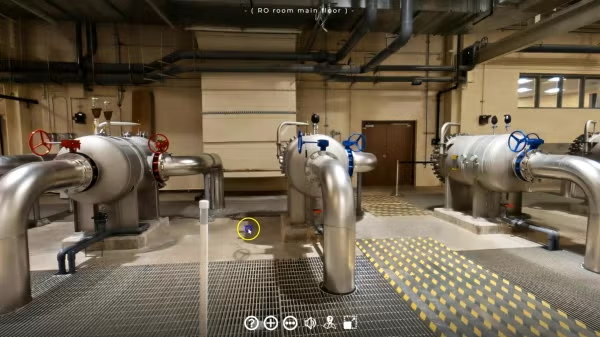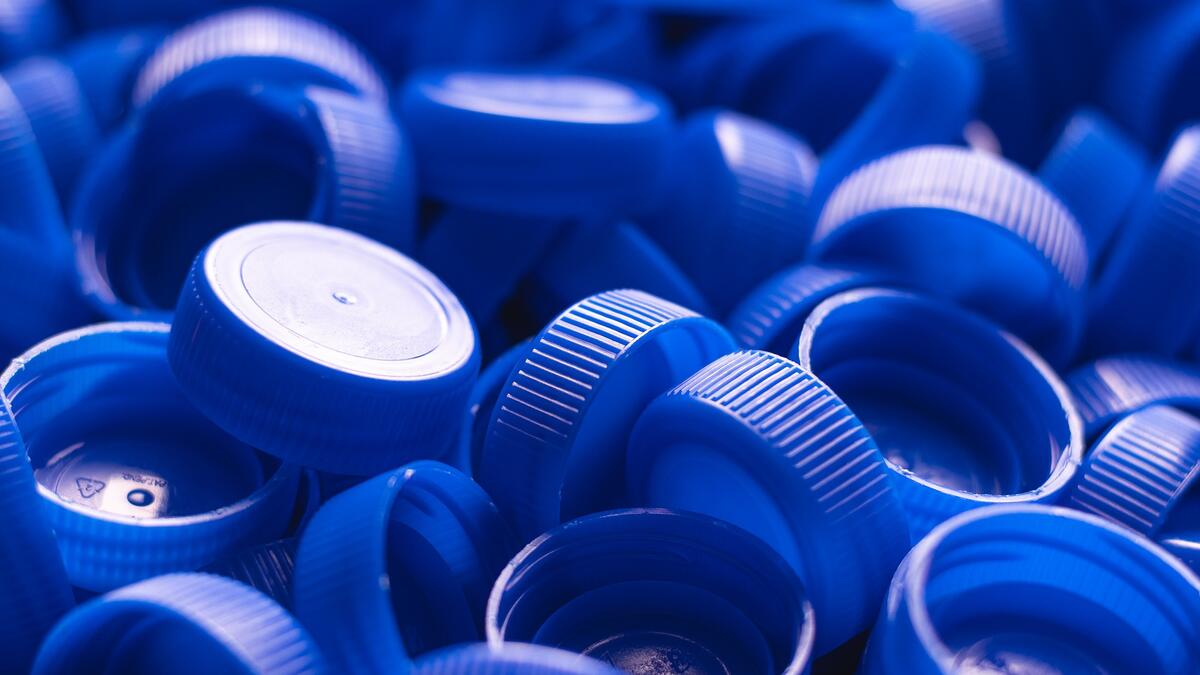Plastic water bottles are synonymous with causing harm to the environment.
Scientists say their creation taps too much of our groundwater supply, leaves a heavy carbon footprint, is a large source of litter and causes severe damage to the world’s coral reefs.
And there’s no sign of society changing how it consumes water. According to a recent report, the bottled water industry is up — way up.
Research analysts from the U.N. Institute for Water, Environment and Health state that worldwide sales are up 73%, and it is one of the fastest growing industries in the world, with more than $270 billion in annual sales. And that number is expected to double by the end of the decade.
It’s a disturbing trend that needs to be reversed, said Tyler Eglen.
Eglen is a project manager at the Rob and Melani Walton Sustainability Solutions Service at Arizona State University. He helped create and now manages the Circular Living Lab, which is dedicated to researching the methods and machines of small- to medium-scale community-based recycling.
ASU News spoke to Eglen about this development and how citizens can do their part.
Editor's note: Answers have been edited for length and clarity.
Tyler Eglen
Question: We know that plastic bottles are not good for the environment. We know that people know they are not good for the environment, and according to a recent CNN article, there's been 73% growth in this industry from 2010–20. Where do you feel there's a disconnect in terms of knowledge and action?
Answer: The main factor in purchasing decisions is price, right? Many people want to purchase ethically and sustainably, but if they are priced out of doing so, then they will always purchase what is cheap and available. As it stands, it’s a big ask to request that everybody solves the plastic pollution problem by refusing to use plastic. And that’s not their fault. The petrochemical industry has massive power when it comes to pushing plastics into our lives. Big brands need plastic to distribute their product, and the plastic producers are more than happy to supply it to them.
I’m always looking for the most sustainable purchasing option, and often, there just isn’t one. The quantity of plastic in our lives is somewhat determined by our own habits, but I think it’s more so determined by how consumer brands choose to produce their product. They are well aware that it could be done differently, but until the economic system either pushes or pulls them to use less plastic, we’re stuck on a path that will leave us with growing mountains of plastic waste.
Also, plastic is convenient and good at what it does.
Q: Bottled water purchases create 25 million tons of plastic waste. Can you give us an idea of how that impacts our society?
A: Plastics take hundreds of years to break down. You may have seen compostable plastics, but those too take years to break down, and only in the exact right conditions. Plastics in the ocean are even worse, because they don’t break down so much as break apart.
And you may think, “Well, that doesn’t really affect me,” but you’d be wrong. Plastic is produced from oil — about 12% of global oil goes to making plastics — and fossil fuels are the number one contributor to climate change. So just by being a consumer of plastics, we’re furthering the degradation of our planet’s ecosystems.
Plastic production also seriously affects fence-lined communities, or communities that live close to these processing facilities. Illness rates, including cancer, are higher in these areas because the plant operations are not always managed responsibly.
If you look at the whole system, you must find a balance. Fossil fuel extraction, plastic production and end-of-life pollution all have negative effects on our health and our world. The only benefit we get is for those relatively few moments when we use the plastic product. And for single-use plastics, that benefit may only be a few seconds. To me, that cost-benefit is way out of balance.
Q: Let's discuss the “plastic smog” these water bottles do to our oceans.
A: This is a scary thought. Plastics make their way into the oceans via heavily populated coastlines, derelict fishing nets and sometimes just direction dumping, but because of the currents in the ocean, these plastics are distributed throughout and often group up together in one of the five major ocean gyres. The smog is composed of trillions of pieces of plastic that have different densities. Some sink and some float, and some are slowly making their way down to the ocean floor. Along this journey, they are being eaten by ocean animals, and they are also often releasing toxic chemicals into the water.
This, of course, is all bad news. The plastics often kill the animals outright by blocking or clogging their internal organs, or restricting their ability to consume normal food, but the plastic also gets stored inside their bodies and then this plastic is passed to our bodies when we consume the fish. This is just one of the mechanisms that is contributing to the higher levels of plastic that is found within humans.
Q: What are some good alternatives to plastic water bottles, and what can consumers do to make themselves more conscious of this problem?
A: One of the major challenges to plastic waste is human behavior change, so I’m glad you asked this. It might take a bit of extra effort to minimize your exposure to plastic, but it’s absolutely worth it. Get a metal water bottle that you love and take it with you everywhere. Make it a part of your routine, and after a while it will become automatic.
I think we’ve all heard of Reduce, Reuse, Recycle, but I love the addition of another R: refuse. Refuse plastic water bottles and cups whenever possible by having a reusable option — glass, metal or even a dedicated plastic Nalgene bottle; at least you can use it for years.
A big part of this is being prepared. So often I think people aren’t planning ahead to when they might encounter plastic in their day, but if you just make it a part of your daily habit to always have a sustainable option on you, its easy. Similarly, go buy a metal set of utensils and keep it in your car, purse, backpack, whatever.
Q: Tell us about some of the work you're doing with ASU students and recycling?
A: I’m currently running the Circular Living Lab through the Walton Sustainability Solutions Service at ASU. We collect hard-to-recycle ASU plastics and turn them back into usable goods.
For example, we’re currently collecting large quantities of coroplast — the material you see all the temporary signage printed on — and we shred, inject, extrude and press that plastic into products like skateboard decks or plastic lumber. We’re making durable goods that are not single-use and that can serve a function for a long time before being recycled again. I have student employees and student mentees that work in the lab to learn more about plastic recycling, material management, product design, businesses entrepreneurship and more.
We’re also in the planning phase to open a 10,000-square-foot community plastic “micro factory” this year in partnership with the city of Phoenix, Goodwill and Hustle PHX. We’re not ready to take in all the city’s plastics yet, but we’re moving in the right direction.
Top photo courtesy Pixabay
More Environment and sustainability

Homes for songbirds: Protecting Lucy’s warblers in the urban desert
Each spring, tiny Lucy’s warblers, with their soft gray plumage and rusty crown, return to the Arizona desert, flitting through the mesquite branches in search of safe places to nest.But as urban…

Public education project brings new water recycling process to life
A new virtual reality project developed by an interdisciplinary team at Arizona State University has earned the 2025 WateReuse Award for Excellence in Outreach and Education. The national …

ASU team creates decision-making framework to improve conservation efficiency
Conserving the world’s ecosystems is a hard job — especially in times of climate change, large-scale landscape destruction and the sixth mass extinction. The job’s not made any easier by the fact…



